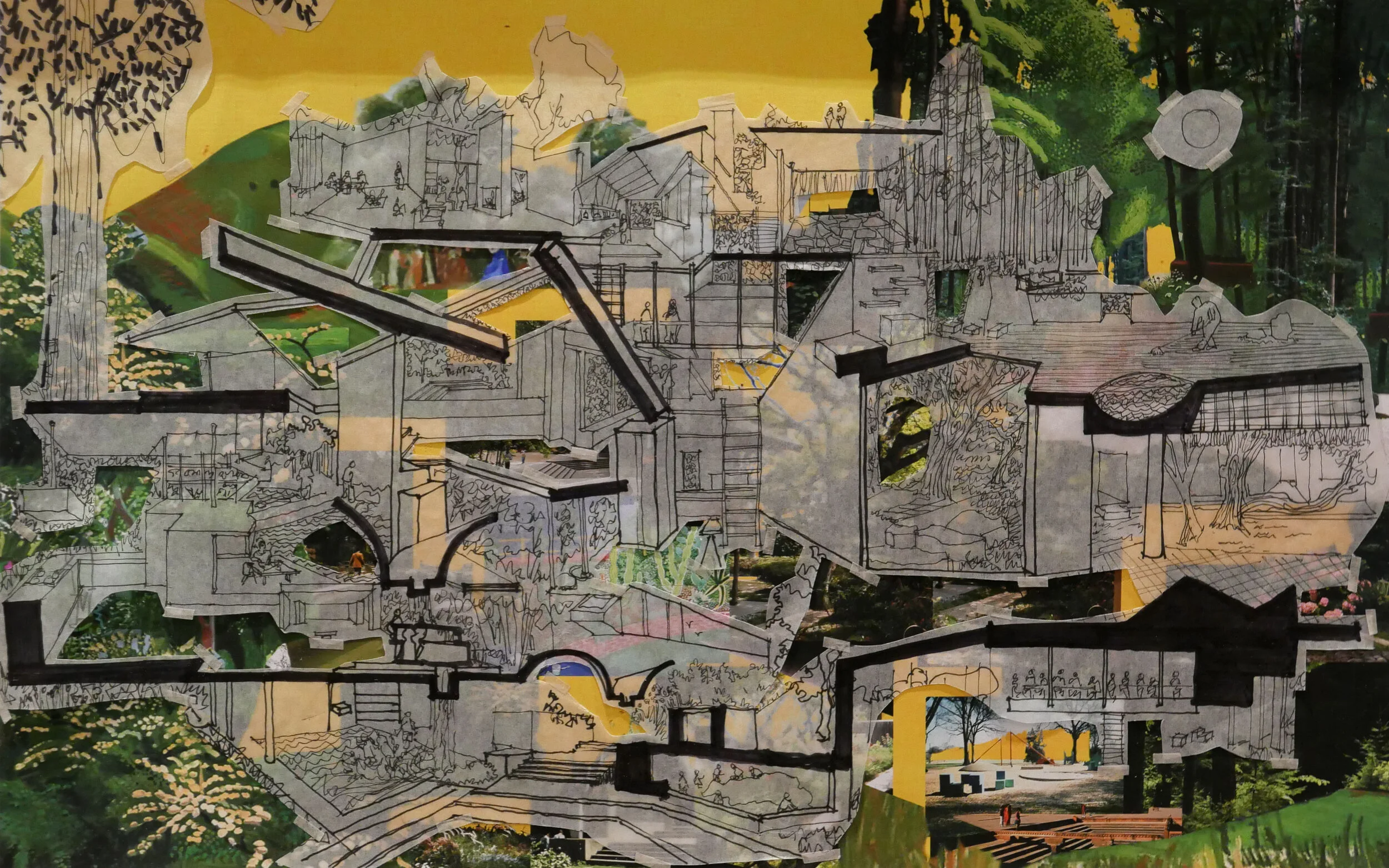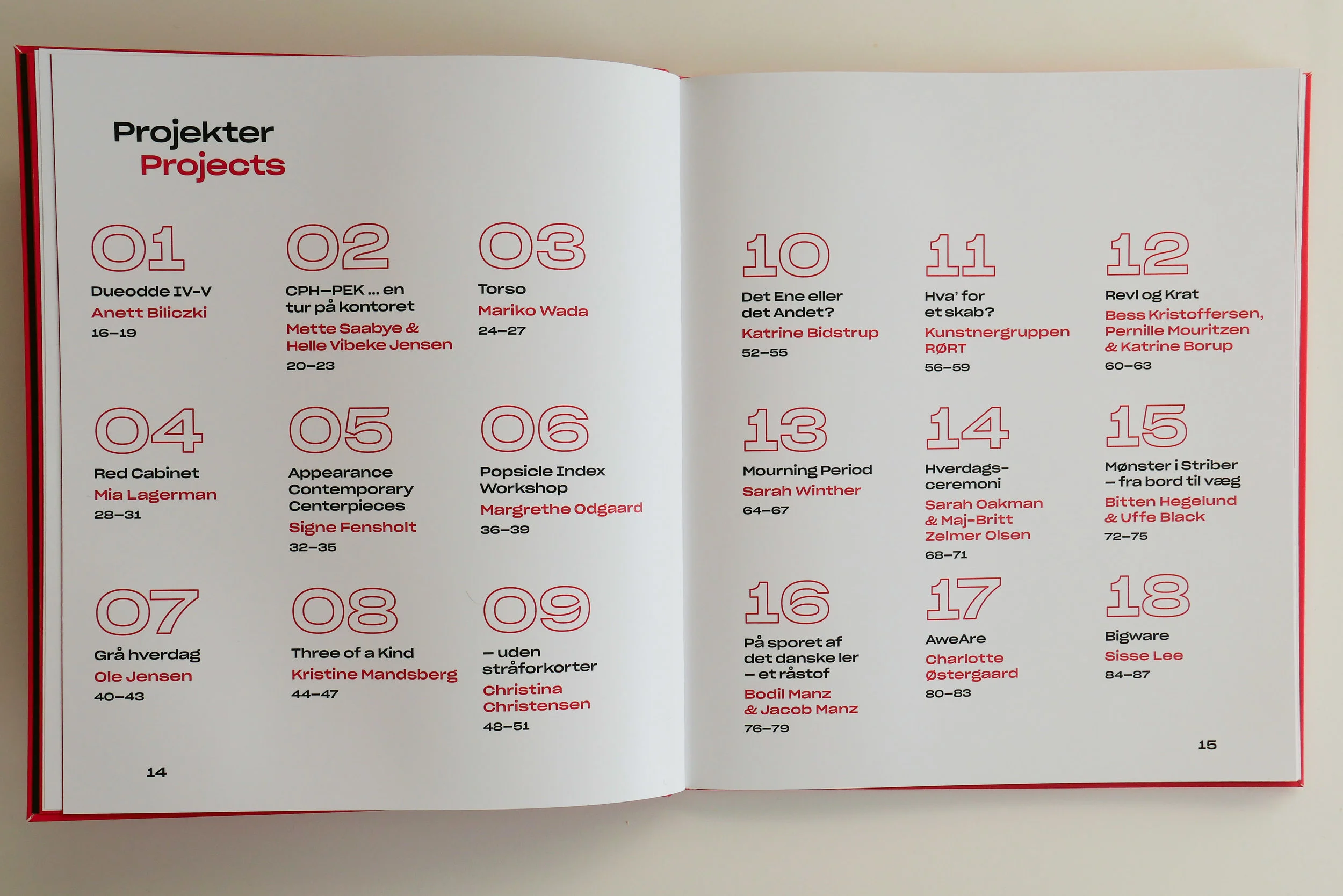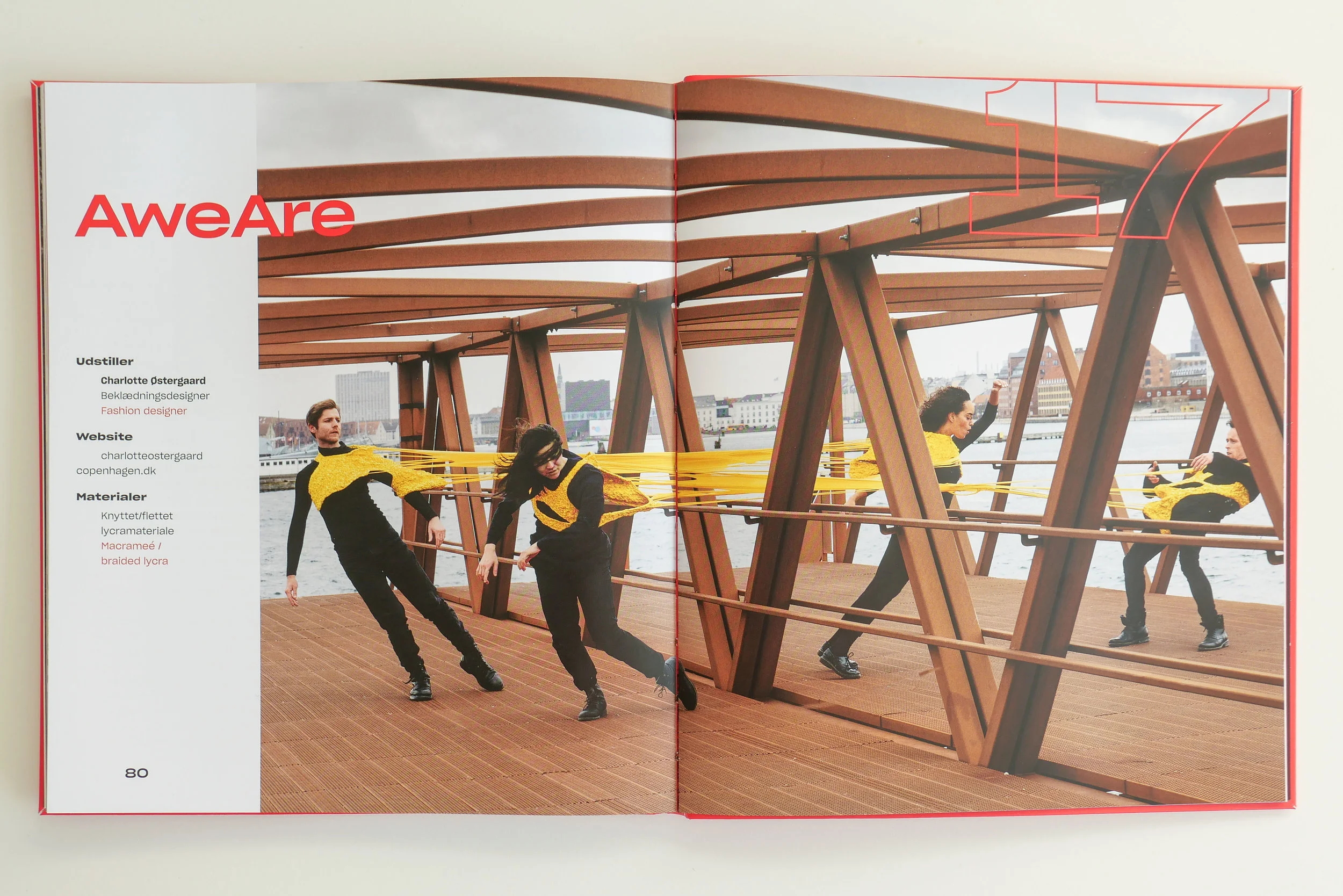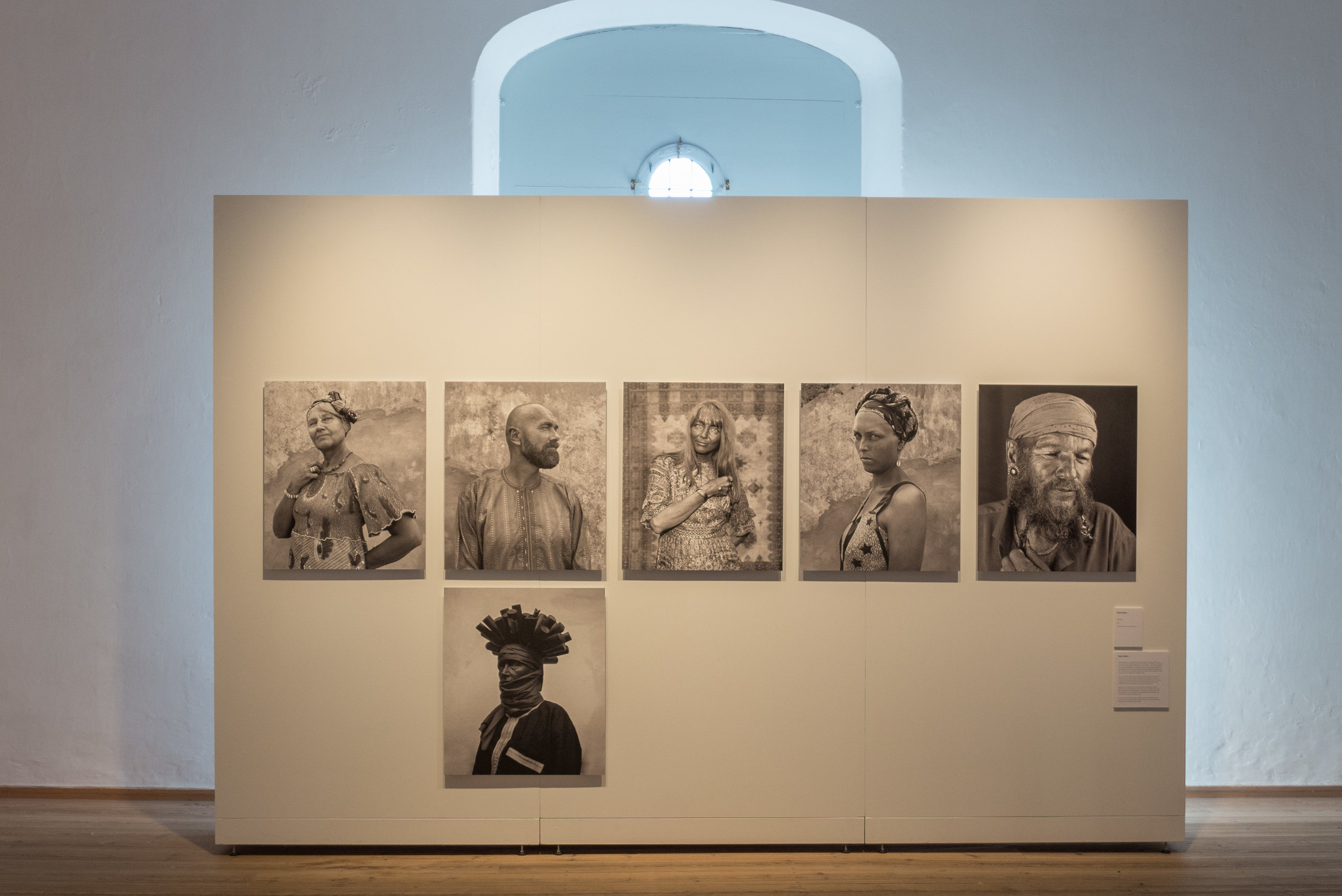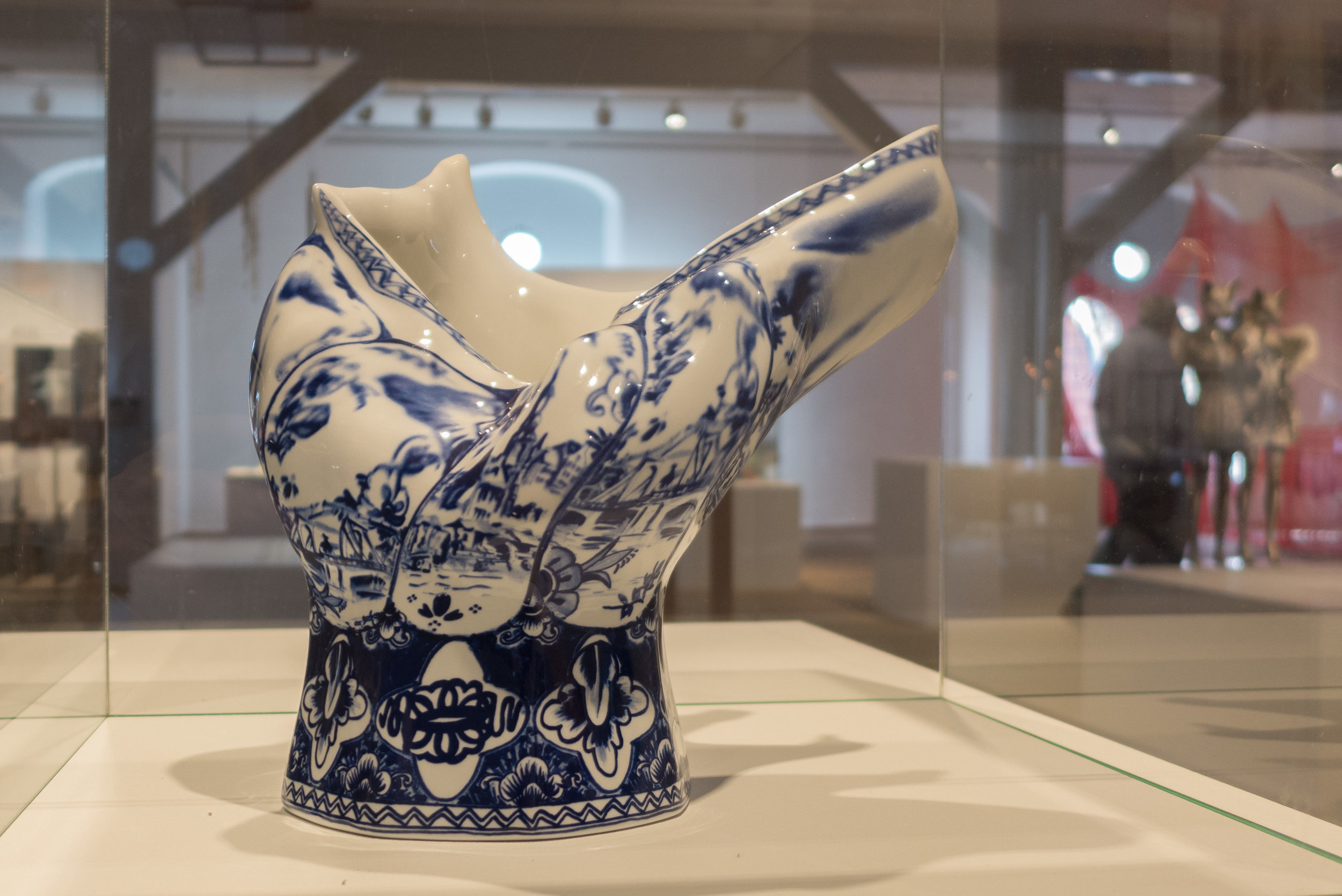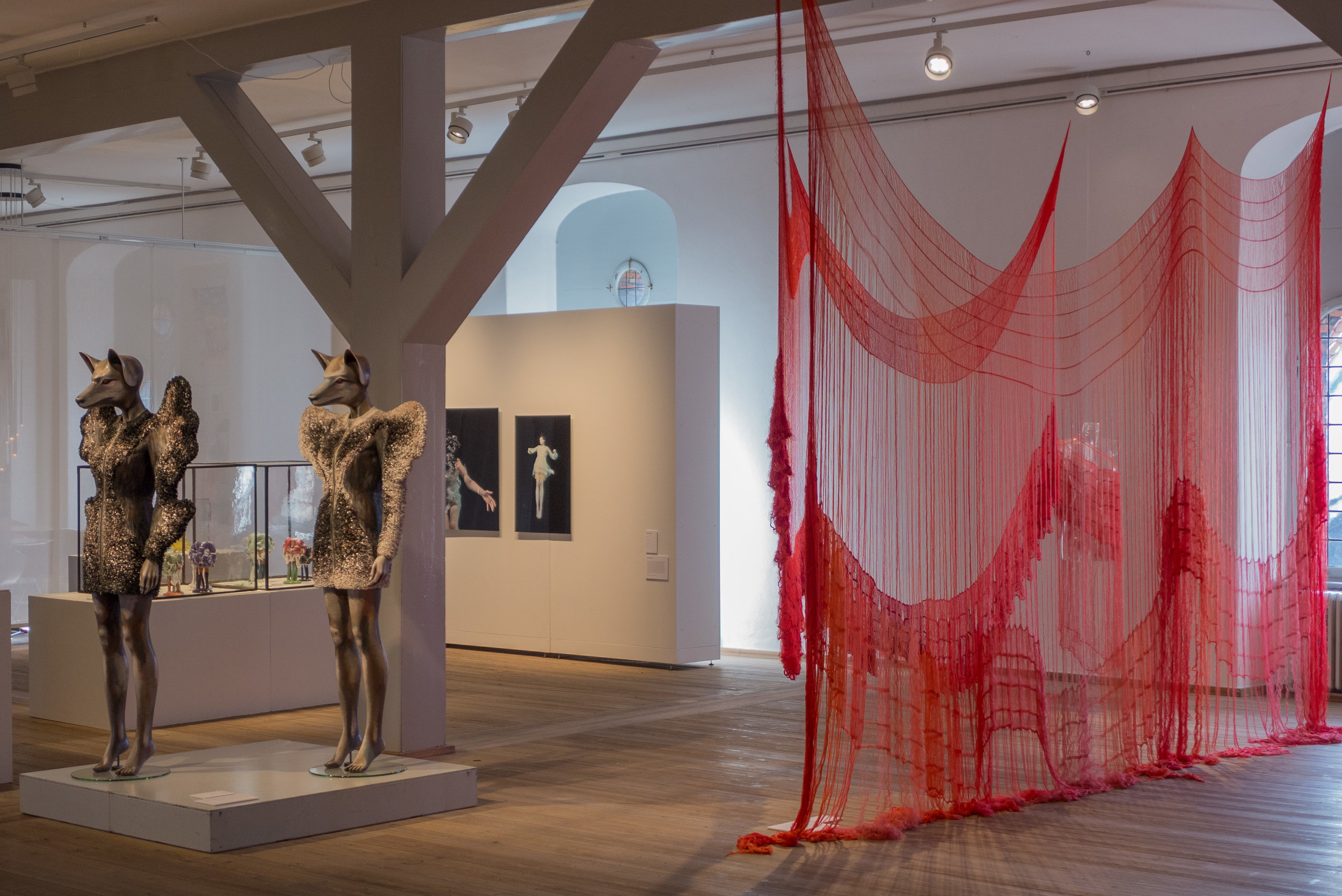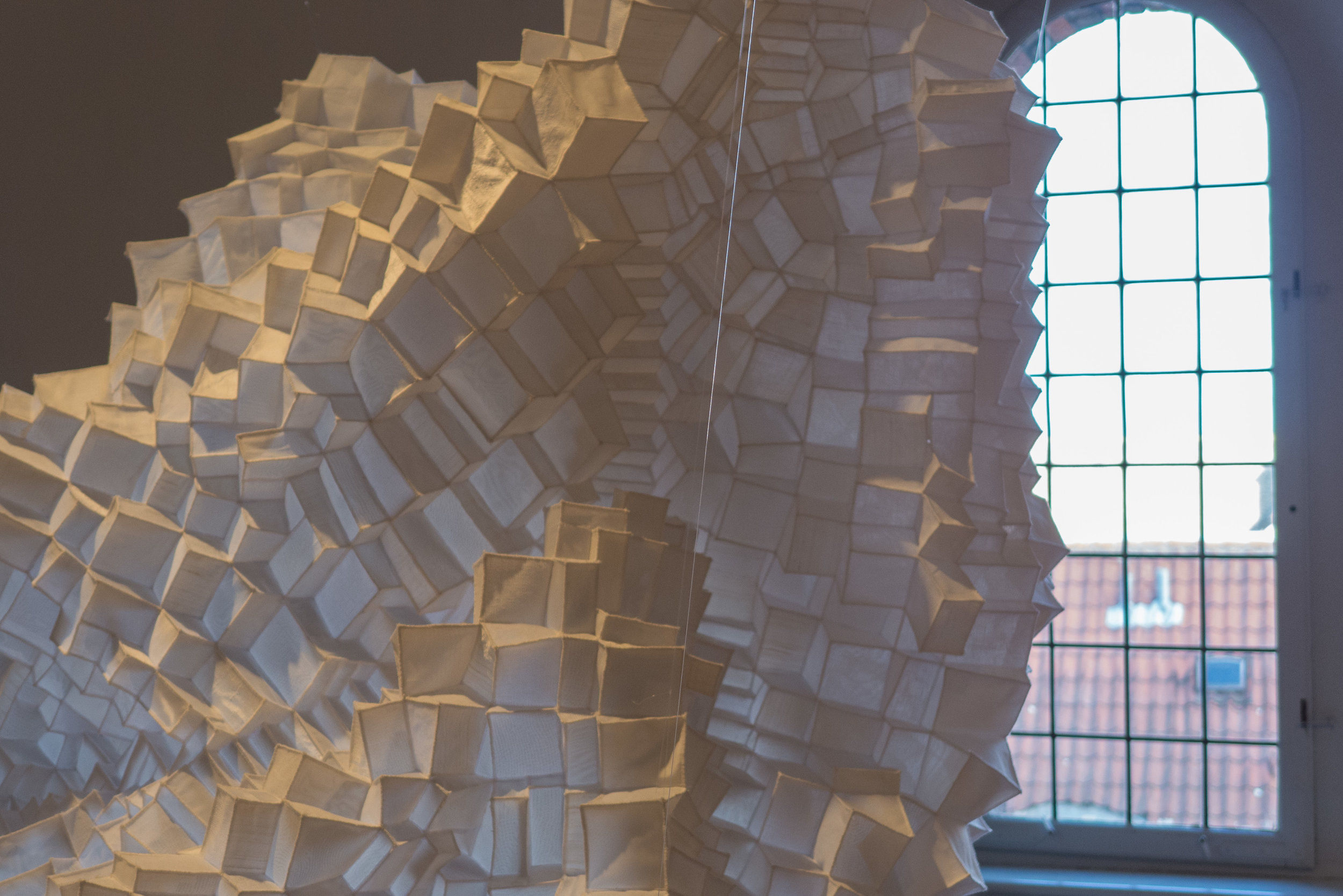Fællesskab anno 2019 / Community anno 2019
/Catalogue for Biennalen for Kunsthåndværk & Design / The Biennale for Craft & Design 2019
The forward for the catalogue has been written by Hans Christian Asmussen - designer and lecturer in design and on the board of Danske Kunsthåndværkere & Designere / the Danish Association of Craft and Design.
He discusses the growing importance of our sense of community and the eighteen projects chosen for the Biennale consider, in one way or another, our "notion of community - some with a critical voice, some in a playful tone, some tenderly, but all striving to explore the value that community offers."
This is about how artists, through their work, explore complex ideas, express what they feel and give the viewer reasons to think and reconsider by emphasising or challenging a view point or simply by shining a light on aspects of our lives that possibly we need to reconsider.
There is a longer essay on Community by the design historian and design theorist Pernille Stockmarr. She makes the crucial observation that with the frequent use of terms such as 'sharing economy', 'co-creation', ‘co-design', 'crowdsourcing', and 'crowdfunding', the concepts of community and cooperation have a strong and important relevance.
Historically, the concept of community is strong in Denmark with a well-established welfare state; a strong sense of family and friendship; a strong and ongoing role for the co-operative movement in retailing for food and household design and a strong volunteer movement through various sports and hobby associations.
In part, political change outside Denmark and the growing pressure to resolve threats to our environment has lead many to question what motivates us and those uncertainties make us reconsider our priorities and help us decide how we can move forward as local or wider communities.
more from MONO - the Cabinetmakers’ Autumn Exhibition at Thorvaldsens Museum
/Through November and into early December this year, 2018, MONO - a major exhibition of furniture by cabinetmakers - was shown in the rooms of Thorvaldsens Museum in Copenhagen.
This was the annual exhibition - Snedkernes Efterårsudstilling or Cabinetmakers’ Autumn Exhibition.
Generally, furniture shown here is not in production and many of the pieces were designed specifically for the exhibition as it is an opportunity to try out ideas or try new forms or to use materials in unconventional ways that might not be obvious for a commercial manufacturer and, above all, designers find ways to highlight the skills of the cabinetmakers.
There are photographs here of the forty-one works shown along with basic information about the materials and dimensions but many of the pieces deserve longer individual posts.
more from MONO - 2Gether by Steen Dueholm Sehested
/At Thorvaldsens Museum in Copenhagen, in November and early December this year, there was a major exhibition of furniture by cabinetmakers. This was MONO - the Snedkernes Efterårsudstilling or Cabinetmakers’ Autumn Exhibition.
Generally, these pieces are not in production and many were designed specifically for the exhibition as it is an opportunity to try out ideas or use materials in unconventional ways that might not be obvious for a commercial manufacturer and designers find ways to highlight the skills of the cabinetmakers.
There are photographs here of the forty-one works shown along with basic information about the materials and dimensions but many of the pieces deserve longer individual posts.
2Gether by Steen Dueholm Sehested - MONO catalogue 13
Stools with an X-shaped frame have a well-established place in Danish design - the display of chairs at Designmuseum Danmark has nine stools of this form.
Most of these stools are folding stools with two frames that are pivoted or hinged at the centre and open out or fold out to form an X shape that supports a seat that is often canvas but can be leather or slats of wood from side to side across the top.
Here, in the stool designed by Steen Dueholm Sehested, there are two pieces - each a complex C shape, with the wood not a constant thickness but thicker at the centre and tapered or thinner towards the top and bottom and curved in both planes with slots cut into them so that they can be slotted or linked together. The C shapes cross over, curve back and cross over again so the base and the top on each side are part of the same piece to create an elegant and sculptural form.
Such complex curves could not be formed from single planks but are made up with finely-cut and joined blocks with the grain forming a part of the design.
The side pieces do not sit square on the floor but the bottom edge is champfered and cut to a sharp curve so the stool has just four points of contact with the floor.
2Gether
MONO catalogue number 13
designed and made by: Steen Dueholm Sehested
formspændt egetræ / moulded oak
height: 44
width: 38
depth: 26 cm
the danish chair - an international affair
/chairs in the collection of Designmuseum Danmark in the display that was designed by Boris Berlin and completed in 2016
Designmuseum Danmark have just published a book about chairs in the collection of the museum. Most of the chairs are from the 20th century and most are Danish although there are several chairs that were made in the 19th century - an English Windsor Chair, an American Shaker Chair and Chinese chairs - that have been included because their forms of construction influenced Danish designs - and there are some modern international designs including chairs from England, Italy, Austria, Germany and the USA that help to set the Danish furniture in a wider context.
Essentially, the book takes the form of a catalogue with separate entries for nine stools and for 104 chairs with each on a double-page spread although for 31 of these the entries continue over to a second double-page that is used for historic photographs of the chair or for reproductions of working drawings.
Descriptions for each chair are succinct with most of the entries just over a hundred words although several are shorter and only two of the chairs have a text that goes into a second paragraph.
This certainly gives the book a clear and tight discipline.
Because this is not a continuous narrative text, it reads more like good museum labels and that is appropriate as the book accompanies a new gallery for the collection of chairs in the museum that was designed by Boris Berlin and completed in 2016.
With a relatively unusual format - the book is 150 mm wide and 270 mm high - the initial impression is that this is a handbook or even a pocket guide but at 32 mm thick and printed on heavy, good-quality paper this is a hefty book so would need a large pocket.
Although it is tall and narrow, the double spread of facing pages gives a good and attractive square format. My only criticism of the book is that several interesting historic photographs and illustrations that have been placed across two pages are broken and distorted by a tight gutter.
Christian Holmsted Olesen, the author of the book, is a curator at the museum and wrote a seminal book on the work of the Danish furniture designer Hans Wegner - Wegner - just one good chair that was published as the main catalogue for an exhibition at Designmuseum Danmark in 2014. His introduction here is short but wide ranging and puts chair design in the much wider context of Danish design in the 20th century.
His aim is to show "how the so-called Golden Age of Danish furniture design was shaped by the study and refinement of historical furniture types," so the chairs in the book are not presented chronologically or by country but grouped by type … by form of construction. Types here are slightly different from the categorisation of form types in the museum gallery - presumably to be less specifically Danish and slightly more obvious for the foreign reader. The most straightforward change is that Shaker chairs, Chinese chairs and steam-bent chairs and the Klismos type of chair and Round Arm chairs - all types specified in the museum display - have been re-arranged in the book and those groups given new names. There is a new category for "Peasant chairs" - here including the influential Shaker chair from the collection and the well-known Church Chair by Kaare Klint and the People's Chair by Børge Mogensen - and the rest are divided between Bentwood chairs and Frame chairs.
In the book the categories for form or type are:
Folding stools and chairs
Low easy chairs
Peasant chairs
Bentwood chairs
Frame chairs
English chairs
Windsor chairs
Shell chairs
Cantilever chairs
Each section is prefaced by a list of the specific chairs of that type or of that form along with the useful outline sketches that were developed for information panels in the exhibition.
The book concludes with profiles of nine prominent and influential Danish designers …. Kaare Klint, Mogens Koch, Ole Wanscher, Børge Mogensen, Hans Wegner, Finn Juhl, Arne Jacobsen, Poul Kjærholm and Verner Panton.
Again, these are short accounts but authoritative - presumably for the general reader who wants more information for context - and finally there is a short but again useful list of recommended books for finding out more.
The Danish Chair an international affair
by Christian Holmsted Olesen
Designmuseum Danmark with Strandberg Publishing 2018
layout and cover design: Rasmus Koch Studio
Pictograms used in the introduction to the exhibition for a diagram of the types of chair and to represent the specific chairs in each type are used here as stylish end papers to the book and then as a quick-reference index at the start of the section on a type or form of chair … here Low easy chairs. Most chairs have a double page spread - so here the Windsor Chair by Ole Wanscher from 1942.
There are historic drawings for some chairs - here the Y or Wishbone Chair by Hans Wegner and historic photographs including the assembly hall of Kvinderegensen in Copenhagen - the university hall of residence for women with the chair designed by Rigmor Andersen in 1931.
The last section of the book has short accounts of the lives and the training and work of nine designers “who shaped their field.”
MONO - Snedkernes Efterårsudstilling / the Cabinetmakers’ Autumn Exhibition 2018
/Piqué
designed by: Hannes Stephensen
produced by: Snedkersind v/Kristian Frandsen
Sunrise
designed by: Lise og Hans Isbrand
produced by: MoreWood Møbelsnedkeri ApS
The Cabinetmakers Autumn Exhibition for 2018 has just opened at Thorvaldsens Museum in Copenhagen.
SE - Snedkernes Efterårsudstilling - The Cabinetmakers’ Autumn Exhibition - is an association of 81 designers and manufacturers. Each year their board select a venue for their exhibition and set a theme along with any specific rules for a particular year - often to do with dimensions but this year also stipulating colour - so each work will be restricted to just one colour with the choice limited to either the natural colour of the material itself or to one of the strong and distinctive colours used in the original decorative schemes of rooms in Thorvaldsens Museum.
Each year, guest designers and guest manufacturers can apply to show their work.
When setting the theme for this year, MONO was suggested to imply a range of associated ideas through monochrome, monolith, monopoly and monologue.
A subheading for the exhibition - furniture shaped by craftsmanship and insight - is important and significant: these pieces highlight the skills and the experience of the cabinetmakers who, in some pieces, take their chosen materials to new extremes and, in all the works, push their workshop techniques to the highest level of quality. So the exhibition is in part about the style and the form of each work but because, the cabinetmakers also represent a long and well-established craft tradition in Denmark, these pieces are about understanding the materials, to know what can be done and how, and to use incredible skills to shape, finish, join, refine or reduce the parts that make each work.
There are forty one works in the exhibition. Most were produced in a partnership between a designer and a cabinetmaker or furniture manufacturer - in many cases a partnership that is now well-established over many years and over several projects shown at the Autumn Exhibition although several pieces were both designed and made by the same person.
The exhibition is also an opportunity to experiment or to produce designs that might otherwise not be commissioned … the aim is not only to challenge the skill of the maker but also to challenge the preconceptions of the visitor.
the Autumn Exhibition continues at Thorvaldsens Museum until 9 December 2018
Cupola drejestol / Cupola swivel chair
designed by: Niels Gammelgaard
produced by: Northern Layers
En stol / A chair
designed by: Foersom & Hiort-Lorenzen
produced by: Kvist Industries A/S
Introvert position
designed by: Andreas Lund
produced by: Toke Overgaard
Rum / Encircle
designed by: Troels Grum-Schwensen
produced by: Malte Gormsen
2Gether
designed and made by: Steen Dueholm Sehested
Bloom
designed by: Hannes Stephensen
produced by: Egeværk
Beside
designed by: Line Depping
produced by: Skagerak Denmark A/S
Guldlok / Goldilocks
designed by: Monique Engelund
produced by: Sune Witt Skovhus
MONO - exhibition catalogue
/The catalogue for the Cabinetmakers’ Autumn Exhibition in 2018 at Thorvaldsens Museum in Copenhagen has a general introduction to the exhibition by the selection board and then for each work there is a double-page layout with a full page black and white photograph for each of the works.
These monochrome images are dramatic and chime with the theme of the exhibition but also give a strong emphasis to the form of each work.
Some pieces have a descriptive or evocative name - so Calm or Look don’t touch and a cabinet for the display of special possessions has the title Ego - while other titles are more straightforward, with works described as Chair or Table and Chair.
Of course the catalogue sets out the name of the designer and the name of the cabinetmaker or the company who realised the work and each entry includes the materials and the dimensions of the piece.
There is also a short paragraph on each work to set out any thoughts that inspired the design or to talk about technical details - many of the pieces use material in an innovative way or the construction is much more complicated than is immediately apparent - and there is a translation in English.
Graphic design is by Studio Claus Due and the black and white photographs were taken by Torben Petersen.
Snedkernes Efterårsudstilling / The Cabinetmakers’ Autumn Exhibition 2018
chair for the museum in Faaborg by Kaare Klint 1914
/Now, in many ways, this chair appears to be old fashioned - looking backward to earlier styles of furniture as a reinterpretation of an historic type of chair - but it should be seen to mark or define the start of a distinctly modern approach to furniture design.
Faaborg is on the south coast of the island of Funen - just over 40 kilometres from Odense. A new museum there was founded in June 1910 to display the work of a group of artists known as the Funen painters and in 1912 it was the artists themselves who proposed Carl Petersen to design a new gallery that was to be built along one side of the summer home and garden of Mads Rasmussen … a wealthy businessman who had made his fortune through canned food.
why does Denmark produce so many 'good' chairs?
/the display of the collection of chairs at Designmuseum Danmark in Copenhagen
Chairs are a common pieces of furniture in most modern homes around the world but the chair has a special - almost an iconic place - in the history of modern design in Denmark.
At the design museum in Copenhagen, in a relatively new gallery, chairs from their collection are each given their own space, each elevated and each given spotlights that are set to come on as you approach.
Don't get me wrong … this is not a criticism … actually far far from a criticism because by lifting the chairs up from their normal place - on the floor with and amongst other furniture - you can appreciate the different designs; you can look at the details and see how the chairs are put together; and with the chairs arranged in groups you begin to see how they fit into a context or a sequence of similar or of very different chairs and, above all, you can see how well made most of them are … so they certainly deserve our attention.
But then take a step back … so why so many different beautiful chairs and from a relatively short period of time? - most in the gallery date from the period from 1930 to the last decade of the last century - and why so many chairs from a relatively small country?
They receive well-deserved acclaim and not just in Denmark but internationally - so much so that these chairs are widely imitated and, in some cases, they are copied so carefully that some are passed off as originals. Some chairs from the 1950s and 1960s, by certain designers, now achieve almost eye-watering amounts of money in auctions. And yet they were all made simply so that we can sit down.
Hans Wegner is said to have designed 1,000 chairs and of those 500 went into production. An exhibition in 2014 at Designmuseum Denmark was a thorough assessment of his remarkable work and took its title - just one good chair - from a comment by Wegner himself.
this was posted first on 5 October but has been moved to be at the beginning of a series that looked in more detail at some of the chairs in Designmuseum Danmark and were posted through October
Chairs at Designmuseum Danmark
/looking at chairs to left or right or above or below you can see how a shape or type of chair evolves or how a form can be re-interpreted in a different material
At Designmuseum Danmark there is a relatively new display of their collection of modern chairs where the chairs are arranged by type rather than by designer or by displaying the chairs in chronological order.
The museum typography for their chairs is one good and clear way of putting the chairs into fairly distinct groups where each group is defined by a form or shape and by the style of a chair … the form of the chair, techniques of working with a material and details of construction and style, being closely interrelated.
Most of the chairs date from the 20th century and were made by Danish cabinetmakers or Danish manufacturers although several older chairs and some chairs from outside Denmark are included where they provide evidence for how or why or when a specific Danish design evolved or if they are relevant evidence from a specific or wider social or historic context.
Most of the chairs are made in wood but there are chairs in metal tube, metal wire and even plastic so there are interesting examples where closely-related designs - in terms of style and shape - can be seen in tube-metal alongside a version in bent-wood although obviously the techniques and the details of construction are very different.
The main groups, defined by the museum, are Folding chairs and stools; Easy chairs - so generally lower and wider chairs - and Windsor chairs - with vertical spindles across the back to support the top rail or, in taller chairs, a head rest. Chippendale chairs have a sturdy frame of square-set legs, usually with stretchers between the legs, and a relatively low back and when they have arms these are housed into the uprights of the back. There is a group derived from Shaker chairs, from America - often with horizontal slats across the back. Chinese chairs and steambent chairs, are similar to the Chippendale Chairs but are distinct in terms of the sitting position which is more upright and more formal and generally the top of the back rail sweeps round into arm rests as a single rather than separate pieces. Round arm chairs and Klismos chairs also have curved and relatively low back rests that continue round into arm rests - with The Chair by Hans Wegner perhaps the most famous Danish example. A Klismos or Klismos Chair is a distinct classical or Greek type with short curved back rest across the top of the back uprights that are usually tapered and splay out down to the floor in a curve. Shell chairs include chairs in moulded or shaped plywood, moulded plastic or metal with shapes that provide, usually in one piece, the support for the seat and back without a framework, and are usually on a separate frame of legs or on a pedestal, that can be made from a different material to the shell, although there are shell chairs where seat, back and support are all moulded. The final group are Cantilever chairs where normally there is a strong base on the floor and some form of support for the front of the seat but no legs or support under the back of the seat - an interesting but not a common type in Denmark.
chair by PV Jensen Klint c1910
armchair by Kaare Klint 1922
JH505 the Cow Horn Chair by Hans Wegner 1952
Ant shell chair by Arne Jacobsen 1951
EKC12 in tubular steel by Poul Kjærholm 1962
PK15 by Poul Kjærholm 1978
all in the collection of Designmuseum Danmark in Copenhagen
The study and analysis of chair designs from different periods has been an important part of the training for designers in Danish schools of architecture and schools of design for a century.
In the 1920s, the architect Kaare Klint was responsible for the conversion and the fittings of the buildings of an 18th-century hospital to form an appropriate exhibition space for the museum of Danish design - then called the Kunstindustrimuseet Danmark which emphasised the close relationship between design and production. Klint taught design in the museum where he encouraged architects and furniture designers to study and draw historic pieces and to study and appreciate cabinet making techniques even if most were not craftsmen themselves.
This division of chair types in the design museum is different from the groups set out by Nicolai de Gier and Stine Liv Buur in their important book Chairs' Tectonics where primary divisions are by material and then by the form and structure … so they look specifically at how the seat, back rest and support or legs are joined or fixed together and take that as the starting point for their classification of chair types.
Designer: Boris Berlin of ISKOS-BERLIN Copenhagen
Curator: Christian Holmsted Olesen.
Graphic design: Rasmus Koch Studio.
Light design: Jørgen Kjær/Cowi Light Design and Adalsteinn Stefansson.
Graphic design: Rasmus Koch Studio.
note:
this was posted initially on the 2 October but has been moved up to make a more-sensible introduction to the series of posts about chairs that were posted through October. The chairs were selected because they are important examples from major Danish designers but they also cover all the types of chair in the design museum typology.
These posts on chairs are also an experiment for this site in trying to present more photographs and slightly more information than is normal in a blog to highlight and analyse key features of each design.
Selecting the category a Danish chair will take you to all the posts in the sequence in which they were posted and there is also a new time line to form an index to these posts:
Designmuseum Danmark on-line catalogue
/Designmuseum Danmark can only display a proportion of their collection and, even when an object is shown in a gallery or exhibition, there is usually a limit to how much information can be included on a label or in a leaflet or guide so the on-line catalogue of the museum is an amazing desk-top resource for finding out more about an object or more about a designer or a manufacturer.
There is a separate index for the museum's collection of furniture and this can be searched by category; by a specific year or a decade; by the name of the designer or the cabinetmaker / manufacturer or with key words and the search can be narrowed down by selecting, for instance, a type of wood from a drop-down list.
Inevitably, the amount of information revealed through the search varies slightly from object to object - the museum points out that the catalogue is being updated as new information becomes available - but there is usually a photograph and often several view points, and there are dimensions; materials; usually a date of acquisition and, if the piece was purchased by the museum rather than given as a gift, there is often the name of the auction house and a date because sale catalogues can be an important source for more information. And for major objects there can be a specific bibliography if it has been included in a publication or an exhibition catalogue.
Designmuseum Danmark on-line site was redesigned recently and the catalogue of the collection can now be found from the front page by following the options or links:
Designmuseum Danmark home page / Library / Search in the collections / Furniture Index
Ultimate Impact
/Ultimate Impact - an exhibition curated by Tina Midtgaard of the design studio Superobjekt - explores the culture of Scandinavian design through the works of 33 artists … photographers, ceramicists, glassmakers, cabinetmakers and textile designers.
Strong visually and important as an intellectual exercise about the imagination - the artists’ and our own - the works are arranged by five ‘phenomena’ - Fantasy, Exoticism, Silence, Ragnorak and Baroque. It is the juxtapositions of pieces and the reverberation or resonance or contrasts of colour or texture or material across the space that is important. Two works use sound and all the pieces experiment in very different ways with form and light and shadow.
This exhibition deliberately questions any lingering preconceptions about Scandinavian design and style.
As a venue, the gallery itself is dramatic, approached by a long spiral brick ramp to climb the round tower, and with the beams and posts and braces of the 17th-century space high above the church itself and, with the massive timbers painted grey and with plain white walls, the architecture provides a strong but open framework for such a complex exhibition but without competing and, with natural light from both sides, there is also the space that is essential for moving around and between the works. This, together with the high quality of the works, makes the exhibition an appropriately challenging but very rich and rewarding experience.
Ultimate Impact at Rundetaarn - The Round Tower in Copenhagen - until 2 July 2017
The Danish Chair
/Part of the collection of modern chairs at Designmuseum Danmark, has been moved into a newly refurbished space in one of the long narrow galleries in the south wing to the right of the entrance.
The new display is stunning and with each chair shown in a self-contained box and with good lighting and clear succinct labels it is possible to really appreciate each piece of furniture. The chairs are arranged on three levels … the middle row at about eye level, the lower chairs angled up and the upper tier angled down slightly so the gallery has something of the feel of a barrel shape or barrel vault and each chair is angled to optimise the view point for the visitor. Of course, there are some down sides in that it is not as easy to get a sense of the chair as a three-dimensional work but this new arrangement does let you get very close to look at details and for the middle and upper rows it is possible for the first time here to see the underside of the chairs if you are interested to see how they are constructed.
The Danish Chair - an international affair Designmuseum Danmark
the origin of a modern Danish aesthetic?
/In the Spring and through into the early summer, there was an important exhibition of the works of the Danish artist Vilhelm Hammershøi at the museum and gallery at Ordrupgaard which is just to the north of Copenhagen. With the title At Home with Hammershøi, the exhibition focused on an amazing series of paintings of interiors that he produced when he and his wife were living in an apartment that they rented in Strandgade in Christianshavn from 1898 through to 1910.
The rooms have plain walls that were painted in soft greys or creams with all the woodwork simple colours - rather than picked out with any gilding - and furniture is relatively simple, set back against the walls, although they had a piano, at least one bookcase and with a few small paintings and simple pottery. This is in marked contrast to photographs and paintings that survive of what must have been more typical middle-class homes in the city with carpets, heavy curtains, upholstered furniture and banks of paintings on the walls.
Was Hammershøi reacting to the clutter of rooms in middle-class homes of the late-19th century? Was it simply that furniture was carefully rearranged for the painting? Was it a consequence of poverty or, at least, the relative poverty of an artist although he came from a middle-class family and while they lived in Strandgade, Hammershøi spent time in London and in Rome. These paintings are certainly not about ostentatious affluence. Whatever the reasons for their restrained good taste, they do seem to reflect a clear and recognisable Danish design aesthetic and these are interiors that we can appreciate as distinctly modern.
Interior in Strandgade, Sunlight on the Floor painted in 1901 by Vilhelm Hammershøi (1864-1916) in the collection of Statens Museum for Kunst in Copenhagen
ARKEN - the Ark
/ARKEN from the north beyond the lagoon and marina
In 1988 Søren Robert Lund, a young architecture student then in his mid 20s, won a competition to design a major new gallery for modern art in Ishøj, in a coastal park on the shore of the bay, about 15 kilometres from Copenhagen to the south west of the city. A final design was agreed in 1992 and the gallery opened in 1996.




